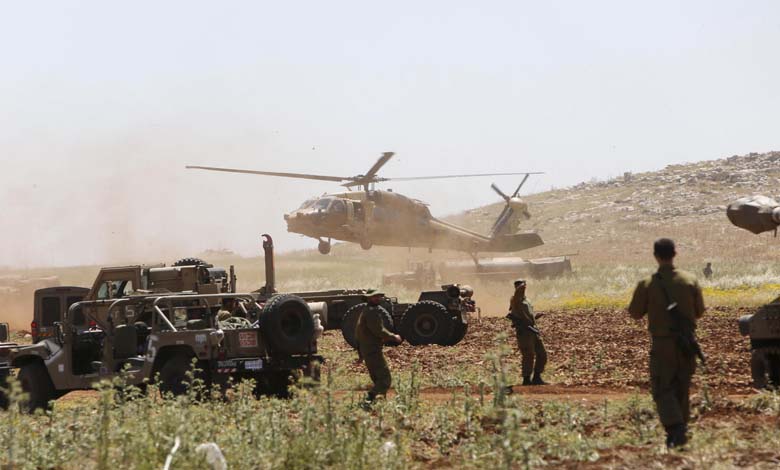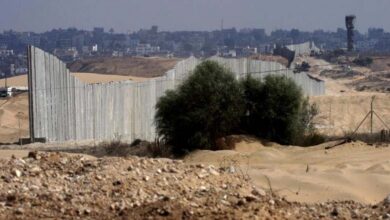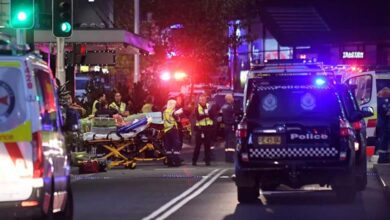Winter fog hides what is most dangerous: Israeli drill amid Hezbollah retaliation fears

At a moment where military tactics intersect with precise political calculations, Israel launched a large-scale military exercise named “Defense and Power,” opening a new chapter in escalating tensions along its northern border. This exercise, conducted in a complex geographical environment including the Golan Heights and Mount Dov, is not a routine drill, but reflects a deep state of alert in the Israeli army since the assassination of Hezbollah senior military leader Haitham al-Tabtaba’i. While harsh winter weather may obscure visibility, it highlights many mutual concerns, with Israel estimating that Hezbollah could exploit this natural cover to carry out targeted attacks, while the Israeli Air Force strengthens defenses and repositions.
Defense and Power
The Israeli army announced the launch of the two-day exercise “Defense and Power,” which includes a series of operational and tactical drills designed to increase readiness at both strategic and field levels. The General Staff directly oversees this exercise, which began by testing the readiness of the 210th Brigade, responsible for a sensitive front in direct contact with the Syrian and Lebanese borders. A significant part of the drill focuses on rapid decision-making in emergency situations and the management of a large-scale theater of operations that may experience sudden developments.
Elevated areas of the Golan and Mount Dov have seen intense movement of troops and military vehicles, accompanied by sounds of explosions from live-fire drills. Local residents report heavy activity of warplanes and drones, indicating the central role of the air force in the exercise scenarios, particularly for securing the northern border against potential aerial or missile intrusions.
Front lines
Israeli sources cited by the Jerusalem Post confirmed that alert levels have been exceptionally raised along the Lebanese border. This security escalation follows the assassination of Haitham al-Tabtaba’i, one of Hezbollah’s top field commanders, who played a key role in developing the group’s capabilities in Lebanon, Syria, and even in Yemen through his close ties with the Houthis.
The elimination of such a high-profile figure in a highly fortified area of southern Lebanon has reopened the front-line issue between the parties and may signal the start of a new phase of message exchanges.
Fears of Hezbollah retaliation
In this context, the Times of Israel reported that Israel’s northern air defenses have been reinforced in anticipation of potential missile launches from Lebanese territory, even though there is no confirmed evidence of Hezbollah intending to conduct a direct attack. Nevertheless, the Israeli army prepares for all scenarios, especially under weather conditions that could provide tactical cover.
Military estimates broadcast by the Israeli army radio indicate that Hezbollah’s response could take multiple forms: long-range rocket barrages targeting Israeli interior areas, limited infiltration operations against military sites in the north, or small-unit maneuvers in southern Lebanon to disrupt the army. Another scenario suggests possible Houthi involvement in the escalation, given Tabtaba’i’s close ties with them and their potential to retaliate against Israeli targets using drone or missile capabilities.
Conversely, Israeli circles do not rule out the “no-response” option, where Hezbollah may choose not to retaliate immediately, leaving room for broader political and regional calculations, particularly amid internal and external pressures on the group. While this option seems less likely to some, historical confrontations show that Hezbollah acts pragmatically, waiting for the right moment to respond in line with strategic objectives.
Multi-front war scenario
Experts cited by the Israeli press suggest that the latest strike could indicate a qualitative shift in the rules of engagement. Israel now appears bolder in targeting top leaders within Hezbollah strongholds, potentially opening a more sensitive phase, especially if Hezbollah considers the targeting of its cadres in heavily fortified areas an unacceptable breach.
Furthermore, Israeli analysts note that the current exercise aligns with preparations for a multi-front war scenario, a recurring topic in Israeli security discussions for years. Israel is not only confronting the Hezbollah threat, but also a network of allied forces across the region, from Gaza to Yemen, via Iraq and Syria.
Therefore, every exercise, no matter how limited, is part of a larger system aimed attesting comprehensive readiness for any major confrontation.
Although the northern border has seen a “cautious calm” in recent months, recent tensions revive fears of sudden escalation. Amid ongoing reciprocal military messaging, the region appears poised for multiple developments that could shape the next phase.












